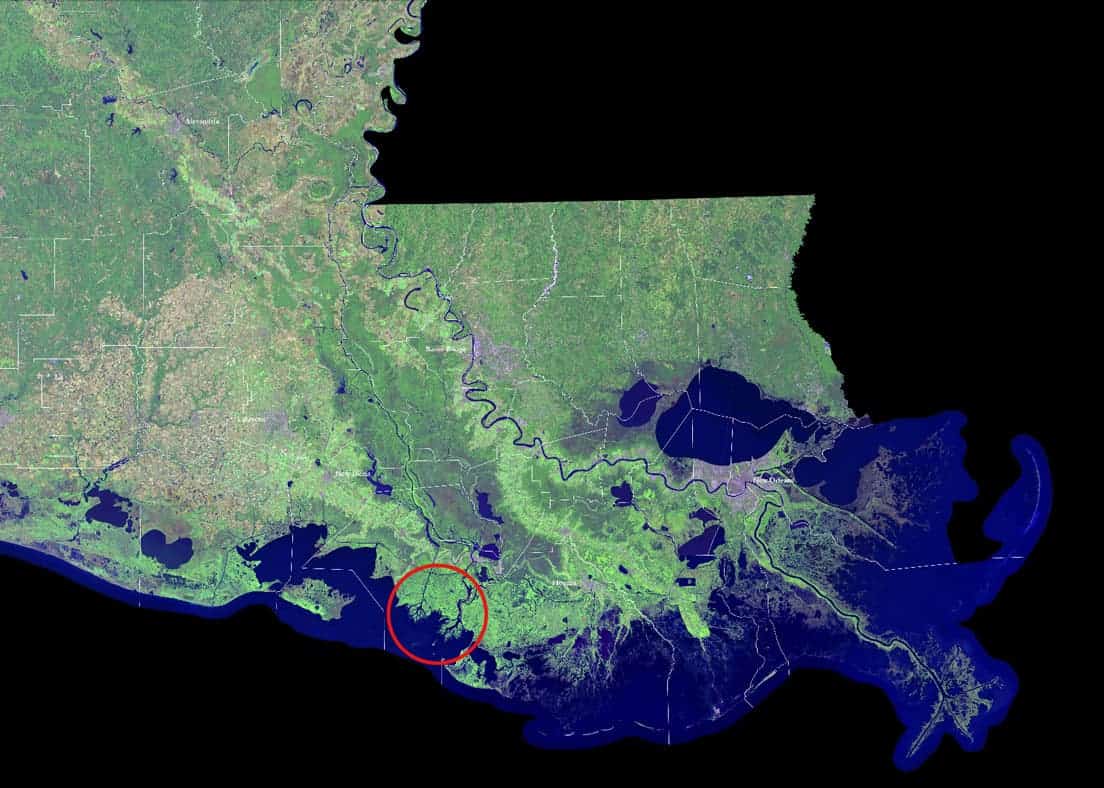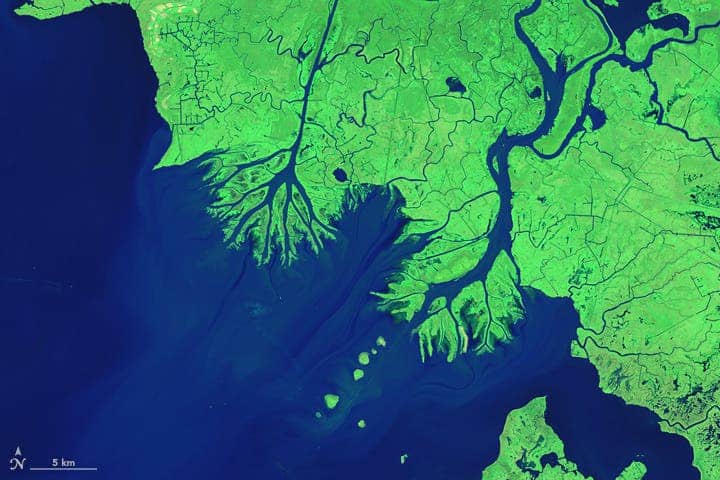A NASA team showed that aircraft-mounted instruments such as radar or lidar can be used to study the development of growing deltas. Using this method they followed the evolution of the Atchafalaya basin’s coastline, where two river deltas are growing into the Gulf of Mexico, over the last 30 years.
Louisiana is sinking
Well, it’s actually subsiding under the Gulf of Mexico’s waters at a rate of about 18 sq miles (46.6 sq km) each year. But two areas of the coast are refusing to go down — Atchafalaya River and its diversion channel, Wax Lake Outlet, each have growing deltas that gain 1.5 and 2 square miles every 11 and 8 hours respectively.
This area has been under intense observation last fall, as a team from NASA’s Jet Propulsion Laboratory in Pasadena used radar, lidar, and a host of other aircraft-mounted instruments to study the growing deltas. Their work proves that airborne observation of such environments is possible and can be accurate while collecting data helps scientists better understand how coasts respond to a rising sea level.
Deltas have been lying around ripe for observation for a long time now, so we have a pretty good understanding of the basic mechanisms that power their growth. But even NASA finds it “hard to do research in a swamp”, so there’s a lot we still don’t understand — the effect different vegetation types have on their development, or what role tides and currents play.
“These factors are usually studied using boats and instruments that have to be transported through marshy and difficult terrain,” said Christine Rains, assistant flight coordinator for the program at JPL.
“This campaign was designed to show that wetlands can also be measured with airborne remote sensing over a large area.”
Mapping the delta

The Louisiana coastline with the two growing deltas, Wax Lake and Atchafalaya, circled in red. The Mississippi River flows to the east of the delta (righ-most blue squiggly line).
Image credits USGS / NASA.
At least once a year, JPL researchers do a fly-over of the Louisiana coast to track subsidence changes and keep an eye out on the levees. So last fall, they re-tasked these flights to focus on observing the growing deltas, especially vegetation and water flow patterns. They did this because, in a delta, water doesn’t flow one way — it flows in every direction. Incoming tide pushes water into the swampy lowland and can send water back uphill.
“Water flows not only through the main channels of the rivers but also through the marshes,” explained JPL’s Marc Simard, principal investigator for the campaign.
As the tide recedes, this water carries organic-rich sediment from the marshes into the river. JPL’s project measured these flows during both rising and falling tides. It also recorded the slope of the water and mapped the riverbed — which control the rivers’ flow speeds — from its origin in the Mississippi River all the way to the ocean.
The results show that airborne monitoring of deltas is feasible, and yields high-resolution results. It also highlighted that some species of marsh vegetation are more resistant to the flow of water than others.
“We were really surprised and impressed by [the findings]. In some places, the water changes by 10 centimeters [4 inches] in an hour or two. In others, it’s only three or four centimeters [1 to one-and-a-half inches]. You can see amazing patterns in the remote sensing measurements.”
The next step is to use these measurements to improve models of how water flows through marshlands. These models form the backbone of our predictions on how coastal marshes will cope with global sea level change.
“Our models will have to catch up with the observations now,” Simard added.
The slideshow NASA put together with the deltas’ growth over the past 30 years is pure eye candy, so check it out:
[button url=”http://earthobservatory.nasa.gov/Features/WorldOfChange/wax_lake.php” postid=”” style=”btn-danger” size=”default” target=”_self” fullwidth=”false”]Take me to NASA![/button]










